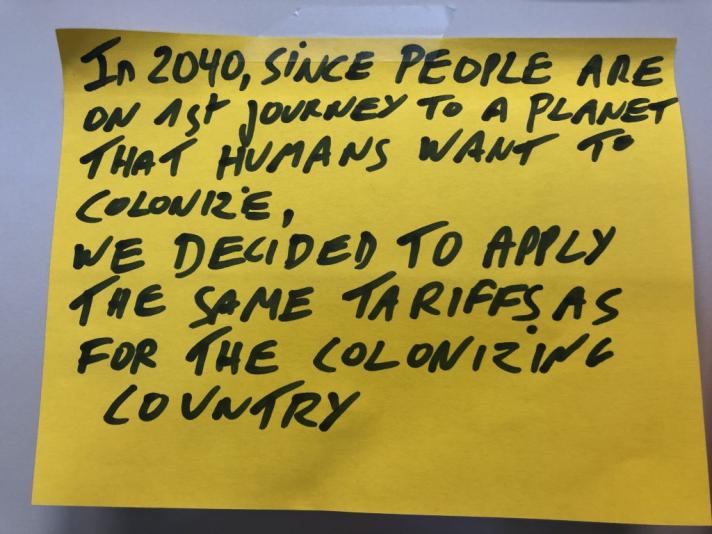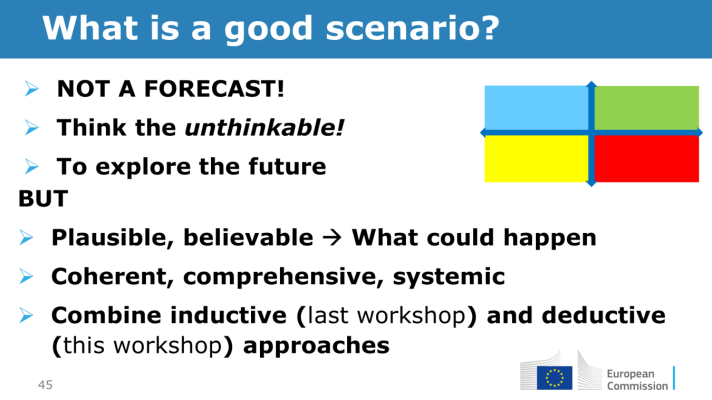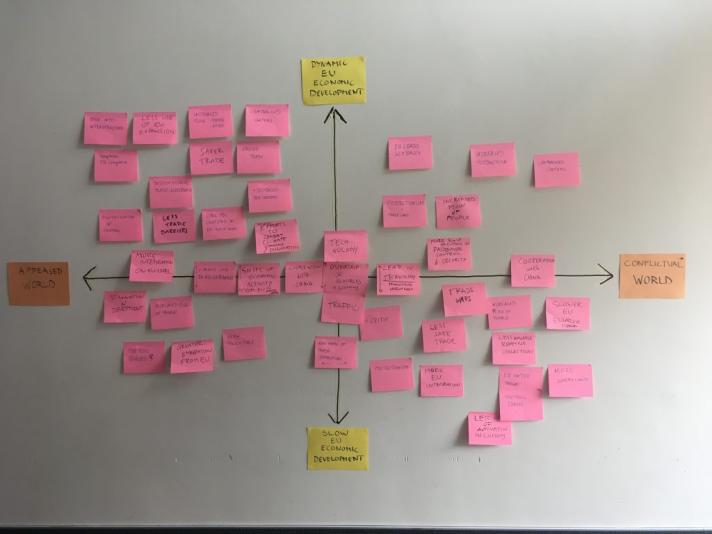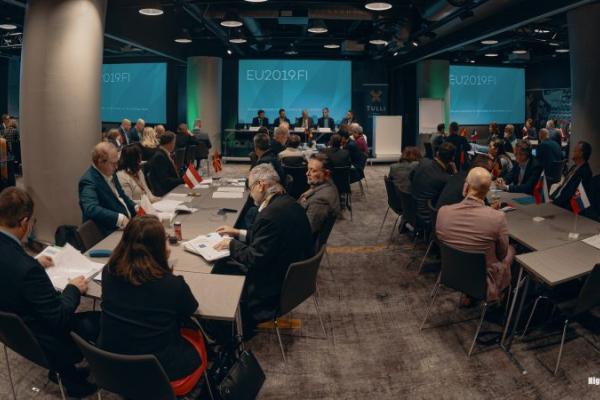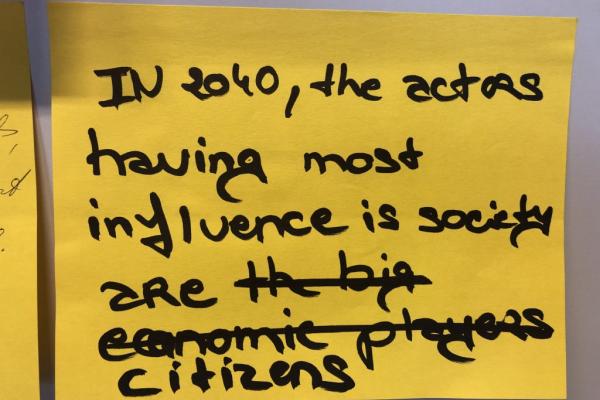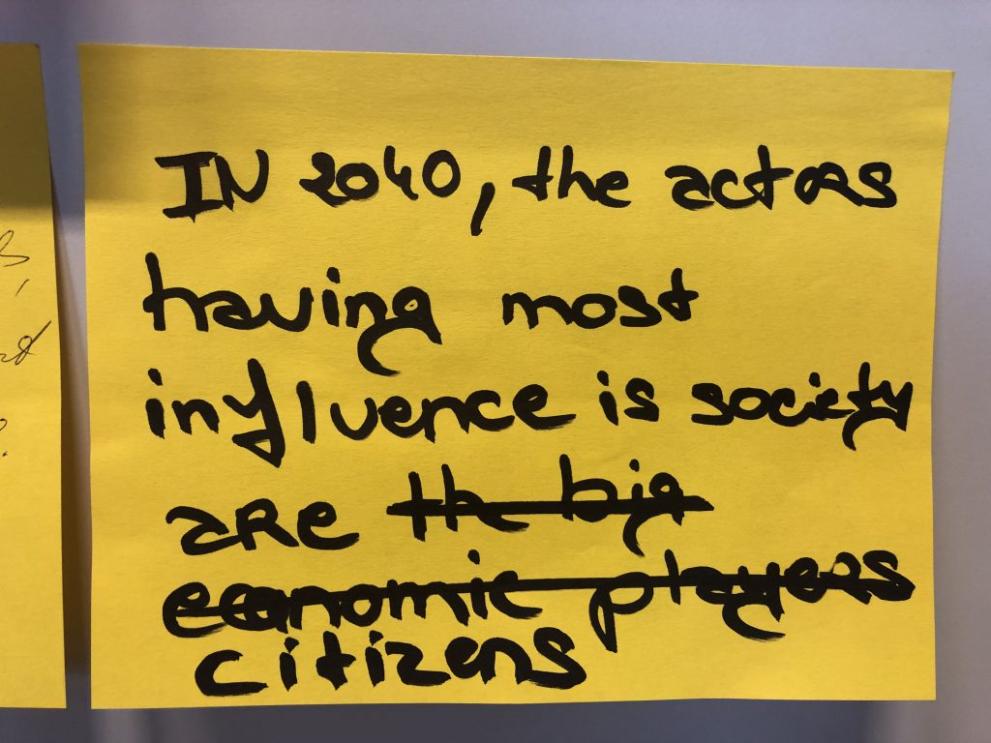
The example of the project Future of Customs in the EU 2040
This article describes the process of building scenarios in a foresight exercise and the role of scenarios in a world of uncertainties, going through continuous transformation. The process was undertaken during the second workshop of the foresight project The Future of Customs in the EU 2040, which took place on24th – 25th June 2019 in Brussels. This second workshop (out of five) was organised by the Competence Centre on Foresight of the Joint Research Centre (JRC), part of the EU Policy Lab. Its purpose was to start building the four different scenarios for customs in the EU in 2040.
The blog does not describe all the insights captured, nor presents the full set of outcomes of the workshop. Its purpose is to explain how foresight is applied to EU policies and policy-making.
Before entering into a description of the practical foresight exercise, let’s look at some key characteristics of the scenario methodology. It is one of the main foresight methods, widely used by the practitioners. Scenarios are not predictions about the future, but rather ‘stories’ illustrating visions and elements of possible futures. Scenarios are a very powerful approach to reveal the dynamics of change of a system. They also help participants develop a systemic understanding of issues and overcome communication barriers to illuminate issues and break deadlocks. Moreover, scenarios help to discover how current development paths could take alternative courses and how this might affect the future. This ability makes scenarios very effective in opening new horizons and facilitating strategic reflection. By being inclusive and participatory, scenario building is also a powerful way to bring together a broad range of stakeholders. In the second workshop on the future of customs, we started building scenarios together with the group of experts.
Most participants (representing all stakeholders) were the same as for the first workshop as it is very important for us to create a collective process where we build the future of customs together, step by step. Participants need to understand where we come from, where we go, and be very familiar with each step in the process.
On Day 1, we started imagining the customs in EU in 2040 with an ice-breaking exercise. Everyone was asked to pick up a piece of folded paper containing the start of a sentence. These sentences were made on the basis of the drivers of change for customs in the EU identified in the previous workshop. In pairs, the participants were asked to complete the sentences imagining that they were in 2040. They then had to present them (and themselves) to the whole group. The pictures below show some examples:
The previous workshop had given us two key uncertainties around which to build the scenarios:
EU economic development and Geopolitical conflicts.
In order to get a better understanding of what may cause and what may prevent geopolitical conflicts, Eamonn Noonan from the European Parliamentary Research Service, was invited to give a presentation on “Geopolitical challenges and choices: perspectives from the ESPAS report”. Eamonn presented some risk factors for high levels of conflicts, such as changes in economic power dynamics between countries, climate change or high population growth in some regions of the world. The presentation gave the participants food for thought on what could be taken into account for the development of the scenarios.
We continued on Day 1 by explaining what a good scenario is:
After that, the participants started understanding the four scenarios, by brainstorming together and identifying key words that would describe the different scenarios.
The four scenarios, as identified in the previous workshop, are characterised by the following axes:
1. Appeased world and Dynamic EU economic development
2. Dynamic EU economic development and Conflictual world
3. Conflictual word and Slow EU economic development
4. Slow EU economic development and Appeased World
Key words describing the different scenarios
The main exercise for Day 2 was a World Café organised in 4 rounds. World Café is an effective and flexible format for hosting large group dialogue which allowed all participants to contribute to each scenario, by rotation.
We set up four tables with 8 experts and 1-2 JRC moderators, working on one scenario each. With the help of structured templates and a poster of the 45 drivers of change identified in the first workshop, the participants imagined and started writing up their 2040 scenario. Guiding questions were e.g.: In this scenario, how does the society, the technological development, the economy, the environment, and the policy world look like in the European Union? How will this driver of change influence the future of the European Union in this scenario? The second step in this very creative session was to think of the consequences for the customs sector: What does this mean for customs?
To ensure consistency between all scenarios, these key elements for the customs’ system had to be addressed:
- IT and data management for customs
- Customs capacity: human resources and technology
- Business
- Customs policy and rule making
- Customs infrastructure
- International environment
- Other
The first round was the longest one as participants from World Café Round 1 were the main contributors to the scenario attributed to their round table. Participants from the next 3 rounds were meant to bring observations from their tables, ask questions on the scenario and complete the story.
A fifth World Café round brought the original groups back to their initial table, so they could take care of the comments added by the successive groups. The objective of this round was to consolidate each scenario and also enrich it with thoughts from other tables visited during the previous rounds.
At the end of the workshop, the participants were asked to continue developing a scenario of their choice, but by using a different perspective. This time they had to imagine themselves in the role of an EU-based trader, a customs policymaker, a customs officer working at the border, or a customs officer working in a back office in 2040. Their task was to describe how they are working and to see how they would relate to customs in this scenario. Two examples of questions they had to answer were: What does your daily work look like in 2040 and what are your key issues at work? What has changed with respect to customs over the last 20 years? This exercise was done in pairs, and afterwards discussed with the group in order to ensure that the narratives made sense within the specific scenario.
This blog post is the second in a series to describe how we work with The Future of Customs in the EU 2040 project in the EU Policy Lab. The project aims at better understanding trends and drivers impacting the customs system in the EU, and possible paths for how this system could develop by 2040. The project will empower policymakers and stakeholders to engage in strategic reflections and create conditions for an efficient EU Customs system in the future. To learn more about this project, please check our project’s page here.
The next workshop will be held in Brussels on the 17th and 18th of September 2019. The purpose of the next workshop is to develop an engagement tool to be used to reflect strategically on the future of customs in the EU. Stay tuned for more and happy futuring!
Details
- Publication date
- 2 July 2019
- Author
- Joint Research Centre
- EU Policy Lab tags

